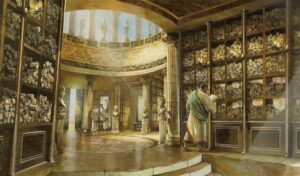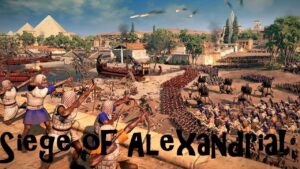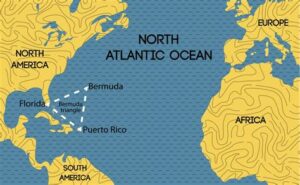Mind Boggling Disclosure
Exclusive; Eye-opening facts about the civilisation of Atlantis,
which was over a thousand times more sophisticated than ours.
Reproduction authorised with acknowledgement.
With details on the fall of Atlantis
Golden Period of Atlantis
The Library of Alexandria
Julius Caesar laid siege to Alexandria
Atlantis most famous legendary place in ancient times
Do Not Repeat Their Mistakes
Golden Period of Atlantis
Atlantis is indeed the missing link of Pangaea, located in mid Atlantic. Pangea was a supercontinent that existed during the late Palaeozoic  and early Mesozoic eras. It assembled from the earlier continental units of Gondwana, Euramerica and Siberia during the Carboniferous approximately 335 million years ago, and began to break apart about 200 million years ago, at the end of the Triassic and beginning of the Jurassic.
and early Mesozoic eras. It assembled from the earlier continental units of Gondwana, Euramerica and Siberia during the Carboniferous approximately 335 million years ago, and began to break apart about 200 million years ago, at the end of the Triassic and beginning of the Jurassic.
In contrast to the present Earth and its distribution of continental mass, Pangaea was centred on the equator and surrounded by the super ocean Panthalassa and the Paleo-Tethys and subsequent Tethys Oceans. Pangaea is the most recent supercontinent to have existed and the first to be reconstructed by geologists.
The Atlantis civilisation was far ahead of ours today, they drove around in what we call today Hoover crafts like flying cars, operating with celestial energy, without the need for roads, as nowadays is the case. All diseases were totally eliminated, but their downfall started when they tempered with the fundamental laws of nature, and this is a very wise lesson for all of us not to follow through in specific scientific directions like genetics i.e. organ transplantation grown from animals, resulting in dire consequences, that led to the downfall of Atlantis!
The Golden Period of Atlantis was the highest level of Light Consciousness ever achieved on planet Earth and in any other advanced civilisation; higher than Lemuria, higher than Mu, and higher than that of Rama and Ignacious.
To this day, the period of Atlantis’ civilisation in Earth’s history is not known because the literature on the subject in the archives of the library of Alexandria was destroyed 2,300 years ago.
The rulers of Alexandria wanted to achieve one of humanity’s boldest goals: by bringing together all the world’s knowledge under one roof. But by the end of the 5th century CE, the library had vanished. Many believes it was destroyed in a catastrophic fire, The truth of the library’s rise and fall is even more complex. All together this history is a crucial lesson for all of us. This civilisation spanned the globe, just as the Atlanteans are today an instructive beacon for us with their knowledge, intellectual developments and spiritual progress.
Indeed, Lemuria never achieved the highly advanced level that existed in that Golden Phase of Atlantis from 40,000 BC to 18,000 BC. A time when Gods walked with Men, and all knew joyful expression It was the hallowed time when many of you walked as Star Children, and later chose biology and the lesson cycles of reincarnation on the Blue Planet called Earth.
In short; Atlantis existed several hundred thousand years ago. Most of the Atlantic times were eras of Light! Only the last phase, the period from 17,500 BC to 10,500 BC was, in contemporary terms, a dark but learning age.
The Library of Alexandria
To this day, the civilisation period of Atlantis in Earth’s history is  unknown. The truth about the rise and fall of Atlantis and the destruction of the library of Alexandria is more complex than has been stated so far.
unknown. The truth about the rise and fall of Atlantis and the destruction of the library of Alexandria is more complex than has been stated so far.
What really happened to the Library of Alexandria 2,300 years ago is still unknown; however the rulers of Alexandria set out to achieve one of humanity’s boldest goals; to gather all the world’s knowledge under one roof.
In its heyday, the Library of Alexandria housed an unprecedented number of scrolls and attracted some of the greatest minds of the Greek world. But by the end of the 5th century AD, the great library had disappeared. Many believed it had been destroyed in a catastrophic fire. However, the reality about the library’s rise and fall is still unclear.
The idea for the library came from Alexander the Great. After establishing himself as a conqueror, the former student of Aristotle turned his attention to building an empire of knowledge headquartered in his namesake city. He died before construction began, but his successor, Ptolemy I, completed Alexander’s plans for a museum and library.
Located in the royal district of the city, the Library of Alexandria may have been built with grand Hellenistic columns, native Egyptian influences, or a unique blend of the two–there are no surviving accounts of its architecture. It is known it had lecture halls, classrooms, and, of course, shelves. As soon as the building was complete, Ptolemy I began to fill it with primarily Greek and Egyptian scrolls. He invited scholars to live and study in Alexandria at his expense. The library grew as they contributed their own manuscripts, but the rulers of Alexandria still wanted a copy of every book in the world.
Luckily, Alexandria was a hub for ships traveling through the Mediterranean. Ptolemy III instituted a policy requiring any ship that docked in Alexandria to turn over its books for copying. Once the Library’s scribes had duplicated the texts, they kept the originals and sent the copies back to the ships. Hired book hunters also scoured the Mediterranean in search of new texts, and the rulers of Alexandria attempted to quash rivals by ending all exports of the Egyptian papyrus used to make scrolls.
These efforts brought hundreds of thousands of books to Alexandria. As the library grew, it became possible to find information on more subjects than ever before, but also much more difficult to find information on any specific subject. Luckily, a scholar named Callimachus of Cyrene set to work on a solution, creating a 120-volume catalogue of the library’s contents, the first of its kind.
By using the catalogues, others were able to navigate the Library’s swelling collection. They made some astounding discoveries. 1,600 years before Columbus set sail, Eratosthenes not only realised the earth was round, but calculated its circumference and diameter within a few miles of their actual size. Heron of Alexandria created the world’s first steam engine over a thousand years before it was finally reinvented during the Industrial Revolution. For about 300 years after its founding in 283 BCE, the library thrived.
Julius Caesar laid siege to Alexandria
But then, in 48 BCE, Julius Caesar laid siege to Alexandria and set the ships in the harbour on fire. For years, scholars believed the library burned as the blaze spread into the city. It’s possible the fire destroyed  part of the sprawling collection, but we know from ancient writings that scholars continued to visit the library for centuries after the siege. Ultimately, the library slowly disappeared as the city changed from Greek, to Roman, Christian, and eventually Muslim hands.
part of the sprawling collection, but we know from ancient writings that scholars continued to visit the library for centuries after the siege. Ultimately, the library slowly disappeared as the city changed from Greek, to Roman, Christian, and eventually Muslim hands.
Each new set of rulers viewed its contents as a threat rather than a source of pride. In 415 CE, the Christian rulers even had a mathematician named Hypatia murdered for studying the library’s ancient Greek texts, which they viewed as blasphemous.
Though the Library of Alexandria and its countless texts are long gone, even today, we’re still grappling with the best ways to collect, access, and preserve our knowledge. There’s more information available today and more advanced technology to preserve it, though we can’t know for sure that our digital archives will be more resistant to destruction than Alexandria’s ink and paper scrolls.
And even if our reservoirs of knowledge are physically secure, they will still have to resist the more insidious forces that tore the library apart: fear of knowledge, and the arrogant belief that the past is obsolete. The difference is that, this time, we know what to prepare for.
The story of Atlantis, history’s most enduring and probably, most influential legend, is a fascinating tale. To start with, every mention of this fabled place sounds like a blend of fantasy and science fiction.
Atlantis was an enormous island, “larger than Libya and Asia combined.” It was populated by a race of demigods, led by powerful kings, who could trace their origins to none other than Poseidon, the mighty god of the seas and oceans. The Atlanteans made most of that connection, creating an advanced civilisation and building enormous cities during a period when the rest of the world was still in the Neolithic. It helped that they lived in a veritable cornucopia, enjoying abundant resources, especially metals: silver, gold, and most importantly, orichalcum, the most precious gold-red metal.
As usually happens with those who have too much wealth and power, the Atlanteans also wanted more. In their lust for power, this advanced civilisation declared war on all the peoples of the Mediterranean.
Unsurprisingly, the Atlanteans’ mighty navy encountered little resistance and conquered and enslaved most of their technologically inferior neighbours. Yet, in their hubris, the Atlanteans underestimated one Greek city. The people of Athens not only resisted the invaders but managed to send their would-be conquerors back from whence they came.
Atlantis most famous legendary place in ancient times
In the end, Atlanteans fell out of the gods’ favour. In a single day and night, Atlantis was destroyed by an earthquake and flood. Once a beacon of culture and civilisation, the fabled island vanished under the waves, along with all its inhabitants.
 Atlantis was the most famous legendary place in the ancient world, and it has remained one of the most enduring ancient myths. Immortalized by its narrator, Plato, the story of Atlantis is a tantalizing tale: An advanced civilization that went too far in its greed, provoking the wrath of the gods who erased Atlantis from the face of the earth in one day and one night.
Atlantis was the most famous legendary place in the ancient world, and it has remained one of the most enduring ancient myths. Immortalized by its narrator, Plato, the story of Atlantis is a tantalizing tale: An advanced civilization that went too far in its greed, provoking the wrath of the gods who erased Atlantis from the face of the earth in one day and one night.
While the end of Atlantis came quickly, the legend persisted, becoming more popular as centuries passed, sparking the imagination of generations of scholars, explorers, artists, and pseudoscientists. As a result, this sunken island that once played only a minor role in Plato’s work has risen to become an integral element of our cultural landscape, a symbol of long-lost Utopia, still waiting to be discovered. A unique adventure beyond our wildest dreams!
Although it seems that the story of Atlantis is nothing more than a moralistic tale, Plato, its creator, was inspired by historical events. After all, history can be much more fascinating than fantasy… why has the story of Atlantis – compared with other ancient myths – maintained its popularity for so long? What is the essential attraction of the tale?
The proposed location of this lost civilisation ranges from the Sahara to Antarctica and countless other places in between, but the real location is the Bermuda Triangle.
Once the downfall started the Temple with the energy supplying crystals went under sea level, apparently these crystals are still active, seen the many mysterious ship and flight accidents happening in the Bermuda Triangle. Caused by navigation failures due to interferences with compass readings from crystal emitting energies.
Throughout Atlantis, Power Grid Crystals, called “Posers”, were triangulated and connected through an alloyed gold-copper rod under a spherical dome that could be angled to receive specific stellar, solar and gravitational energy waves.
This was the system, used to power homes, offices, media, theatres, factories, medical centres, schools and businesses. The Poser system was installed in each structure and operated through ‘receiving crystals’ of different sizes.
 In the Bermuda Triangle, anomalous structures were located at a depth of 2,000 metres using sonar. A pyramid was found, made of some kind of crystal. Authorities reportedly stopped all further investigations.
In the Bermuda Triangle, anomalous structures were located at a depth of 2,000 metres using sonar. A pyramid was found, made of some kind of crystal. Authorities reportedly stopped all further investigations.
In 1977, a Russian scientist wrote that not far from the Bermuda Islands, on the bottom of the ocean, a rise very similar to a pyramid had been found by the sonar of a fishing boat. An expedition was then organised that discovered a pyramid-like mountain at a depth of 400 metres. With a height of 150 metres.
American oceanographers discovered the pyramids 20 years ago, the surface of the structures was flat and they were made of glass or some type of crystal. No one was able to photograph, but those are three times larger than the Pyramid of Giza.
There is a good probability that the bulk of major changes will be disclosed in an avalanche of unexpected news-shocks, simultaneously from multiple sources, likely beginning in Asia or Switzerland. And that will be the beginning of a new era in history people are going to witness; it is the first major change on this planet since Atlantis sank about 12,000 years ago. Many historic facts will come under scrutiny for finding the true truth.
Stay Tuned, there is more to come;
on November 4, our real History revealed
Do Not Repeat Their Mistakes!”
The Reasons behind the Fall of Atlantis…
Dolores Cannon speaks about the fall of Atlantis and the Bermuda  Triangle. Have you ever wondered about the legendary lost civilisation of Atlantis? The very mention of its name conjures up images of a once-mighty civilisation that mysteriously vanished beneath the waves. But what if I told you that the story of Atlantis isn’t just a myth? Through her ground-breaking work in hypnotherapy and past-life regression, Dolores uncovered a wealth of information about Atlantis. This ancient civilisation, she believed, hold crucial lessons for our modern society.
Triangle. Have you ever wondered about the legendary lost civilisation of Atlantis? The very mention of its name conjures up images of a once-mighty civilisation that mysteriously vanished beneath the waves. But what if I told you that the story of Atlantis isn’t just a myth? Through her ground-breaking work in hypnotherapy and past-life regression, Dolores uncovered a wealth of information about Atlantis. This ancient civilisation, she believed, hold crucial lessons for our modern society.
October 28, 2023 at 12:41 PM
Didnt knew athens existed 12000 years ago
October 28, 2023 at 2:57 PM
Even much older stay tuned for upcoming issues with mind boggling disclosures
October 29, 2023 at 11:55 AM
Look I love the story and do believe Atlantis existed by no way they were 1000 years advanced beyond us BUT only then did they mess around with nature.
Makes no sense considering we are already doing that today.
October 29, 2023 at 12:17 PM
I came upon this article this morning, and found it to be most intriguing. Apparently, The Scientific Method, which I use to disect most everything I think about or do, will be useful here, too.
October 29, 2023 at 2:43 PM
Explain your method to be validated
October 29, 2023 at 3:01 PM
This was so interesting! I am a Christian who believes we were created by God first in Spiritual bodies prior to flesh. God was repulsed by sinful flesh, why would He create us flesh first, He did not. I believe all created souls watched God create the earth. Then we lived on earth, Atlantis was one of the places we in habited, probably the largest. One God created everything!
October 29, 2023 at 3:10 PM
realistic interpreted